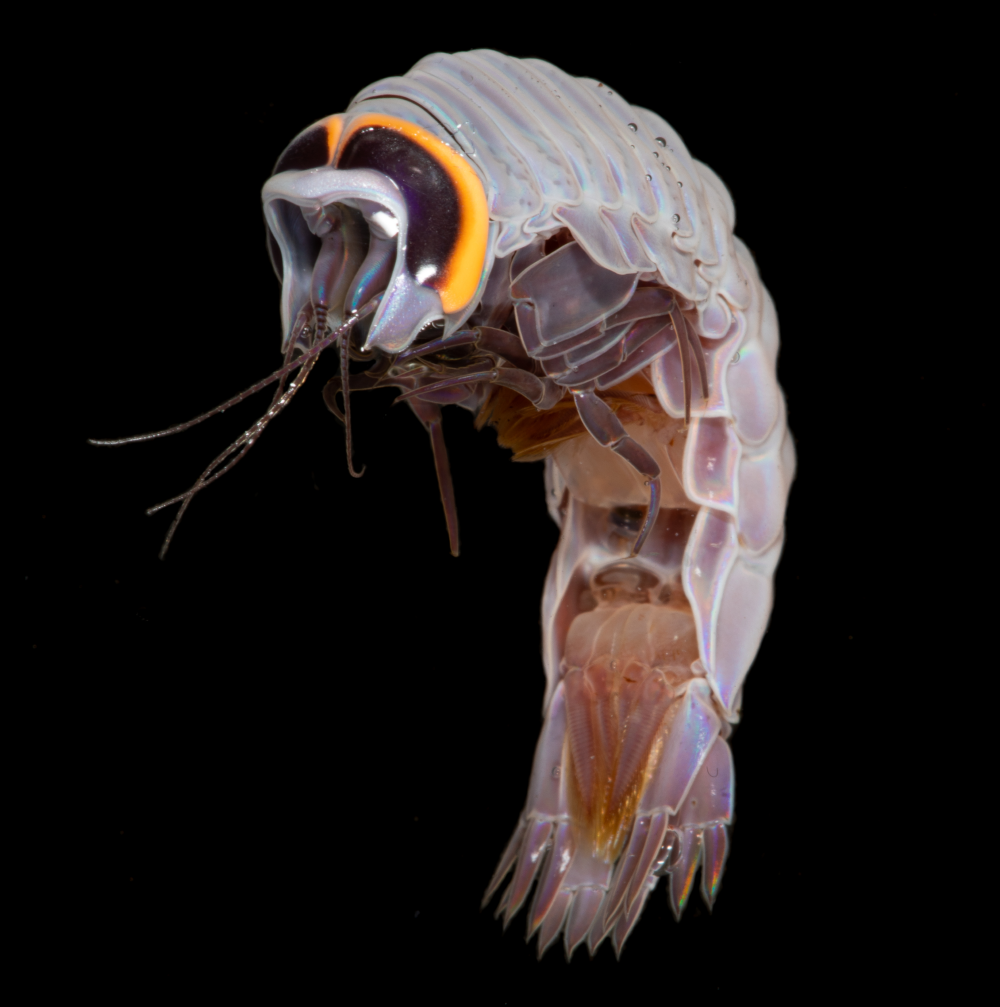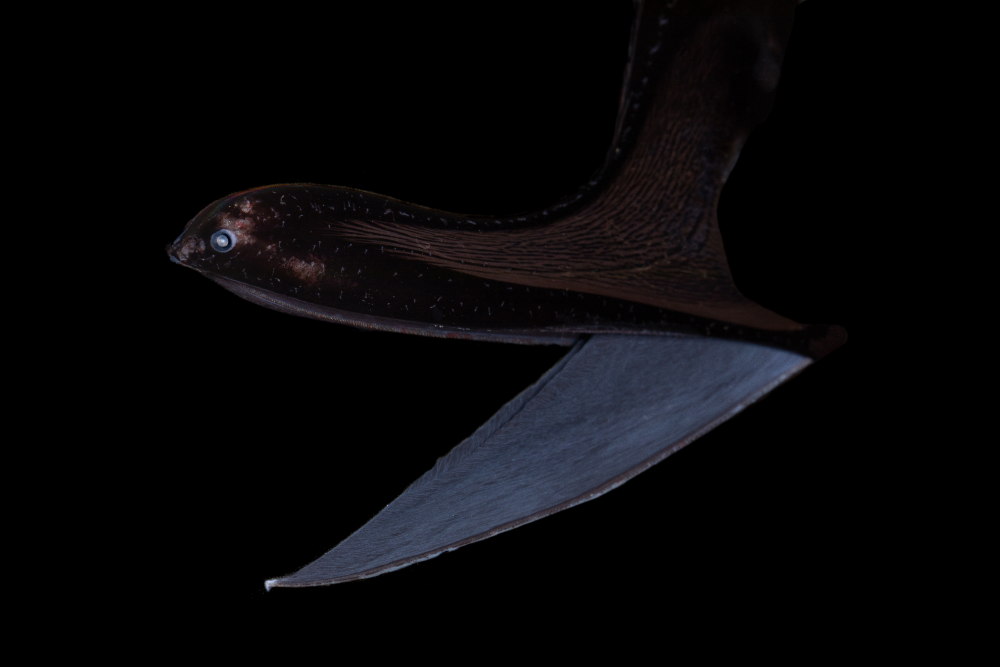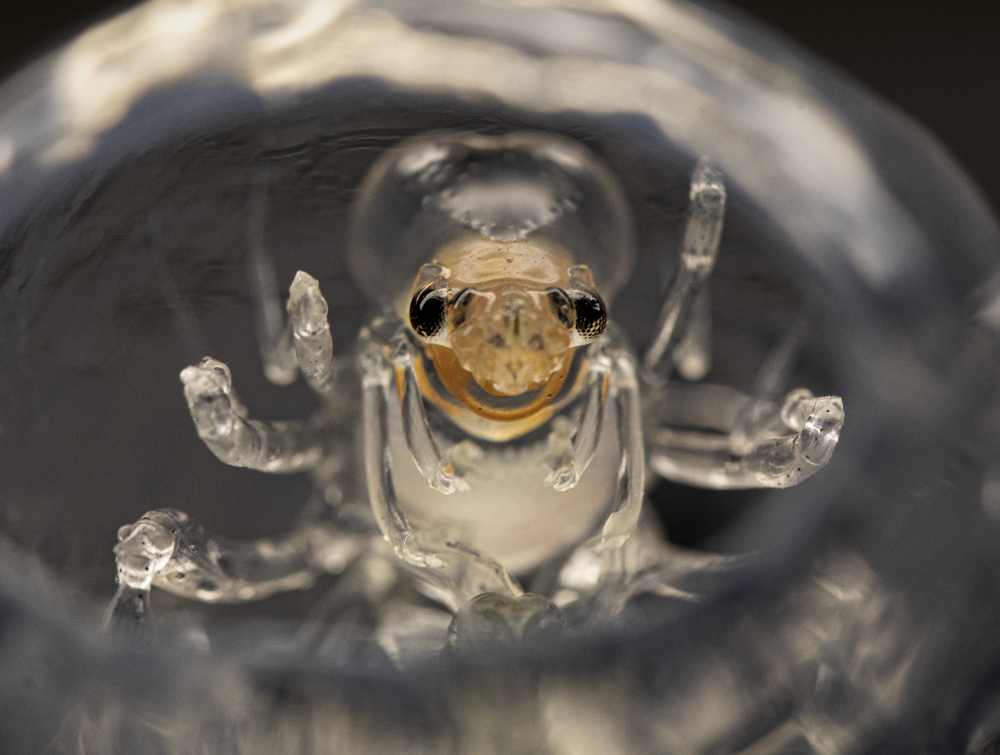During World War II, the seabed started moving. At least, that’s what it looked like to sonar technicians who couldn’t figure out why the ocean depth kept changing dramatically from night to day. We now know that this “false seafloor” was the result of deep scattering layers, walls consisting of millions of animals that undergo a diel vertical migration, plunging into the twilight zone by day and moving closer to the surface at night.
It was a pivotal discovery for our understanding of marine life, and one Dr Adrian Martin considers to be among the most fascinating things we’ve ever learned about the ocean. A senior research fellow based at the National Oceanography Centre (NOC) in Southampton, UK, Martin has dedicated much of his research to shining a light on the darkest depths of that migration: an area known as the twilight zone.

Image credit: Paul Caiger © Woods Hole Oceanographic Institution
As its name suggests, it’s a place where little light is found, starting at around 200 meters (656 feet) and plunging down to 1,000 meters (3,280 feet). There’s too little light for plant life to grow, but just enough if you’re a species that likes to hunt, and hoo boy – the predators down there are really something else.
“It’s incredible, really, in terms of the diversity of life that you get there,” Martin told IFLScience. “You get fish, you get squid, krill, and varieties of prawns. There is a huge variety of crustacea down there, but also mammals. Sperm whales, for example, are frequent visitors to the mesopelagic [the scientific name for the twilight zone]. We have quite an extraordinary diversity of things down there.”
The evolutionary pressure of a dimly lit environment has given rise to some remarkable adaptations for life in the twilight zone. Fish such as swordfish and tuna have huge eyes for hunting in the mesopelagic, but other groups have adapted to the darkness by making light of their own.
“A lot of people are familiar with bioluminescence for things like fireflies, but generally speaking, you don’t tend to encounter it very often on the surface,” Martin continued. “There are some estimates that up to 90 percent of the metazoan – so that’s animals made of more than one cell – up to 90 percent of them has some degree of bioluminescence, and that reflects the fact that there are lots of uses that you can put light to if you inhabit a region where there is very little light.”

Image credit: Paul Caiger © Woods Hole Oceanographic Institution
“But, obviously, it is a creature-eat-creature environment, and so a lot of what goes on down there is being eaten, or avoiding being eaten. Some creatures use [bioluminescence] as bait – you may have seen pictures of anglerfishes that have a dangly bait [like the above photo, or that scene in Finding Nemo] – but you can use it for protection as well. There are some organisms that have the ability to fire off bioluminescence to startle predators that are about to attack.”
Bioluminescence has also been engineered as a form of camouflage by animals that use it for countershading. Even in low light, the silhouette of some species can be visible against the backdrop of the slightly light ocean above them. The elongated bristlemouth (Sigmops elongatus) is one of many species that uses countershading when the juvenile fish develops light-producing organs along its belly.
One of the more scandalous theories about bioluminescence is that some species may almost use it like a burglar alarm. Fearing that they’re about to be eaten, animals may flash not just to deter the immediate predator – but also in the hopes of attracting an even bigger predator that might just eat their attacker.
“The ability to create light gives you an incredible array of things that you can do in terms of trying to improve your life expectancy,” added Martin. I’ll say.

Image credit: Paul Caiger © Woods Hole Oceanographic Institution
The twilight zone is a tough environment that poses many challenges to its inhabitants, but it is also vulnerable to change. The NOC website describes the twilight zone as “potentially threatened”, and as Martin explained, a lot of the driving forces behind that threat are uncomfortably close to home.

Image credit: Paul Caiger © Woods Hole Oceanographic Institution
“The big one is climate change and from the twilight zone perspective, there are the immediate direct pressures in that the temperature of the twilight zone is going to change – for the most part, it’s going to get warmer. There are already regions of the ocean where the water is actually sufficiently low in oxygen to make it quite challenging to live, particularly for larger organisms, and the evidence that we have is that those are already expanding in response to climate change, and are projected to get even larger. The increase in size of those low oxygen zones is something of particular concern to the twilight zone.”
“There’s also a lot of discussion going on at the moment about the extent to which climate change can influence the amount of plant growth, the phytoplankton, which are the base of the marine food web. Everything is dependent on phytoplankton converting carbon dioxide into living material, but we’re in a situation whereby the amount of phytoplankton growth taking place each year is changing in response to climate change.”

Image credit: Paul Caiger © Woods Hole Oceanographic Institution
This might sound like a surface problem, but as we know from that pivotal discovery back in WWII, the creatures of the deep don’t stay in the twilight zone at night. Even when it’s not directly happening in the deep, the impact of climate change on the fertility and growth of surface species can have a big impact on the twilight zone, and all the flashy lights and big teeth won’t be enough to save its inhabitants.
Protecting the twilight zone may also be a case of preserving our own species, as this deep sea region plays a pivotal role in carbon sequestration – something that remains one of the biggest mysteries Martin hopes to crack.

Image credit: Paul Caiger © Woods Hole Oceanographic Institution
“The big question that is occupying a lot of my time is how [the twilight zone] helps the ocean store carbon,” he said. “I don’t think we understand how marine life is helping to store carbon at present, and so that, to me, is a really big question.”
“We know the twilight zone is really important for how it does that. We know that about 90 percent of marine snow [organic detritus] gets recycled within the twilight zone. It is a very efficient gateway to how that carbon gets deeper in the ocean, and carbon needs to get deeper in the ocean if it’s going to stay away from the atmosphere. So, we really need to understand how the twilight zone is influencing that huge flux of carbon.”
They may look alien, but they need a place on this planet just as much as we do.
Source Link: Fierce Hunters Sparkle With Bioluminescence In The Twilight Zone, But It's Under Threat